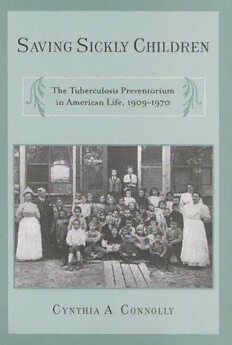
Saving Sickly Children: The Tuberculosis Preventorium in American Life, 1909-1970 (Critical Issues in Health and Medicine) PDF
201 Pages·2008·1.849 MB·English
Most books are stored in the elastic cloud where traffic is expensive. For this reason, we have a limit on daily download.
Preview Saving Sickly Children: The Tuberculosis Preventorium in American Life, 1909-1970 (Critical Issues in Health and Medicine)
Description:
Known as "The Great Killer" and "The White Plague," few diseases influenced American life as much as tuberculosis. Sufferers migrated to mountain or desert climates believed to ameliorate symptoms. Architects designed homes with sleeping porches and verandas so sufferers could spend time in the open air. The disease even developed its own consumer culture complete with invalid beds, spittoons, sputum collection devices, and disinfectants. The "preventorium," an institution designed to protect children from the ravages of the disease, emerged in this era of Progressive ideals in public health. In this book, Cynthia A. Connolly provides a provocative analysis of public health and family welfare through the lens of the tuberculosis preventorium. This unique facility was intended to prevent TB in indigent children from families labeled irresponsible or at risk for developing the disease. Yet, it also held deeply rooted assumptions about class, race, and ethnicity. Connolly goes further to explain how the child-saving themes embedded in the preventorium movement continue to shape children's health care delivery and family policy in the United States.
See more
The list of books you might like
Most books are stored in the elastic cloud where traffic is expensive. For this reason, we have a limit on daily download.
